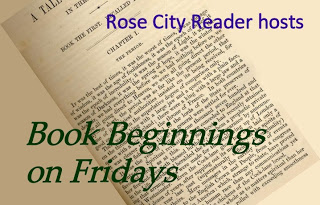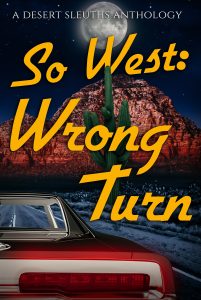The White Tiger by Aravind Adiga is next up on our 100 Bestsellers List reading challenge.
This post does contain spoilers.
The White Tiger by Aravind Adiga
Man Booker Prize Winner
The White Tiger won the Man Booker Prize for fiction in 2008. I wasn’t familiar with this prize, so I did a little research. Originally, the Man Booker Prize for Fiction was awarded each year for the best original novel written in English and published in the United Kingdom, with the intent being to recognize authors and encourage the widest possible readership, thus boosting book sales for the winner. The prize is awarded to the book rather than the author and in 2014 the scope was widened to include any novel published in the English language. The prize money awarded to Man Booker winners is one of the largest amounts in the world of literary prizes.
Social Commentary
Adiga’s debut novel is a scathing social commentary on life in India in the beginning years of this century. As Roberta noted in her Writer’s Review, Halwai, the main character, continually refers to the Darkness as a way to illustrate the demeaning and demoralizing existence of most Indians. Throughout the book, Halwai strives to escape the Darkness and live in the Light, a goal he achieved and which is represented by the multiple chandeliers he has in his apartment in Bangalore.
There were many references to the caste system of India throughout The White Tiger, and since I didn’t know much about the caste system, I did some more research. The caste system has held Indians within their rigid heirarchical groups for over 3000 years, preventing upward mobility, economic opportunities, and co-mingling of the groups. India banned caste-based discrimination in their constitution, enacted quotas for hiring in 1950, and expanded those quotas to encompass more caste levels in 1989. With the technology boom of the early 2000s resulting in the rise of call centers servicing American companies (most based in and around Bangalore), the caste system has become less adhered to by the younger generations. It is still followed in the more rural areas of India and, as Adiga illustrates so well in The White Tiger, most people in the supposedly more progressive areas of the country, i.e., the large cities, still cling to the beliefs that the castes really do dictate intelligence level, abilities, and career paths, and discrimination on a personal level is still the norm.
The Orphan Master’s Son
As I read The White Tiger, I was continually reminded of one of our earlier novels, The Orphan Master’s Son, by Adam Johnson (another prize winning book). I was struck by the similarities of the two main characters, Halwai and Pak Jun Do, and also by the similarities of Indian and Korean society. Both Halwai and Pak Jun Do were nameless as infants and assigned names later in life. “Jun Do” is the English equivalent to “John Doe” and Pak was a name from the list of 114 Grand Martyrs of the Revolution used for orphaned boys. Hulwai is called “Munna,” which means “boy,” until he goes to school, at which time his teacher calls him Balram Halwai. Halwai is his caste level and it means “sweet-maker.”
In both books the authors make clear that there is no chance for the lower classes to achieve upward mobility or economic stability. The masses are nothing more than glorified slaves and their continued existence is dictated solely by the whims of those above them, either the higher caste levels in India (the landlords, the wealthy) or by the government officials (both military and non-military) in Korea. Most never think to question any order given by someone in a position of authority, never think to question their place in the societal hierarchy, let alone dare to think of being free; economical freedom, intellectual freedom, social freedom – all are equally unattainable and therefore dangerous to consider. If you step out of line, not only will you suffer potentially lethal consequences, but so will your immediate and quite possibly your extended family members. This makes it all the more astounding that both Halwai and Pak Jun Do do eventually attain economic success (Halwai) and/or freedom of thought and action (Pak Jun Do), although through unlawful means and at great personal costs.
Self-Examination
Aravind Adiga’s The White Tiger is a disturbing read, as it is meant to be. This is not a lighthearted romp, nor is Halwai a lovable rapscallion. As Adiga told in an interview with The Guardian, The White Tiger highlights inequities and indignities of Indian culture and spotlights the dark underbelly of India’s “economic miracle.”
“At a time when India is going through great changes and, with China, is likely to inherit the world from the west, it is important that writers like me try to highlight the brutal injustices of society. That’s what writers like Flaubert, Balzac and Dickens did in the 19th century and, as a result, England and France are better societies. That’s what I’m trying to do – it’s not an attack on the country, it’s about the greater process of self-examination.”
I certainly didn’t enjoy reading The White Tiger, but it did cause me think about some things I had not considered before. It led me to research the Man Booker Prize, the caste system, and the author himself. It brought back memories of The Orphan Master’s Son, another disturbing and thought-provoking book. If nothing else, this 100 Bestsellers Reading Challenge is stretching my brain and my horizons, and those are good things.
What about you? Did you find The White Tiger to be a stretch from you normal reading choices? Did you think it was a worthwhile read?
Related posts:
- Book-beginnings, a discussion of the first line of the novel
- Karen’s review from a reader’s perspective
- Roberta’s review from a writer’s perspective
You can also join us on social media:
- The Bestseller Code 100 Pinterest Page
- Twitter: #BestsellerCode100
- Facebook: Bestseller Code 100 Reading Group
- The full list is now posted on GoodReads
__________________
What are we reading next?
If you ever have questions about what we are reading next or when we’re starting the next discussion, check the 100 Book List tab in the navigation bar at the top of the blog. Links in the list go to the landing page from this blog where the discussion starts. However, this is an open-ended challenge so feel free to jump in with any of the books at any time.
The next book is number 74. A Day Late and a Dollar Short by Terry McMillan (2000)- Discussion begins October 30, 2017








